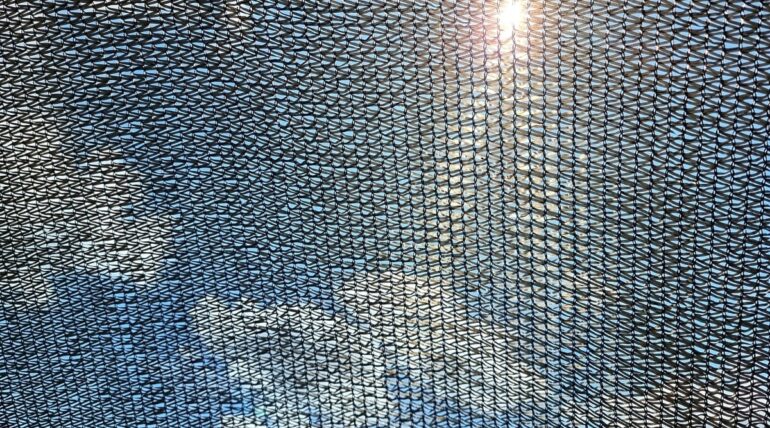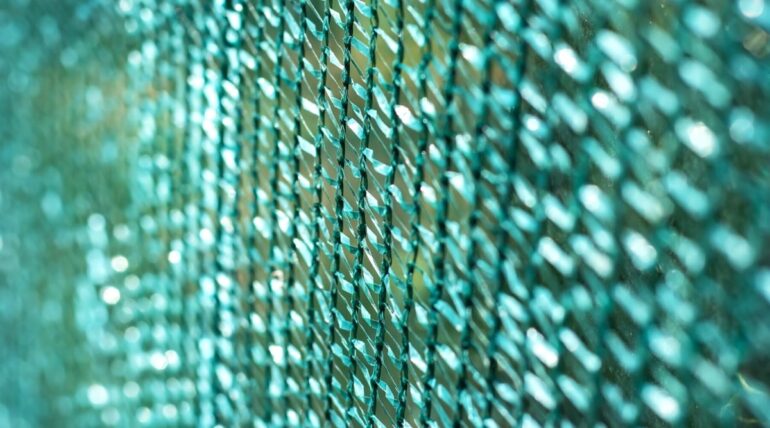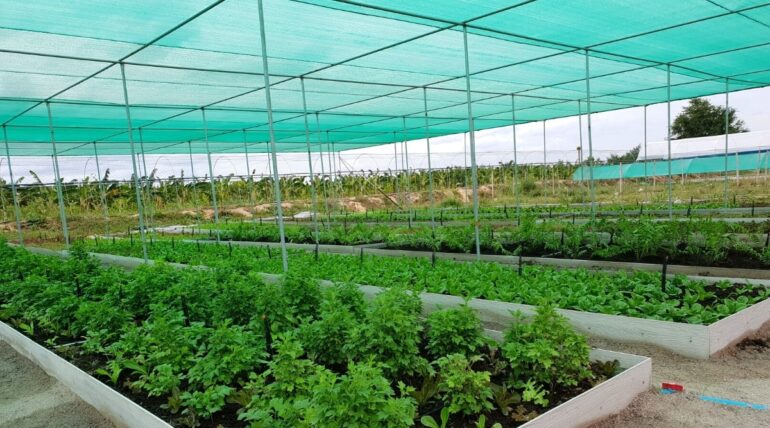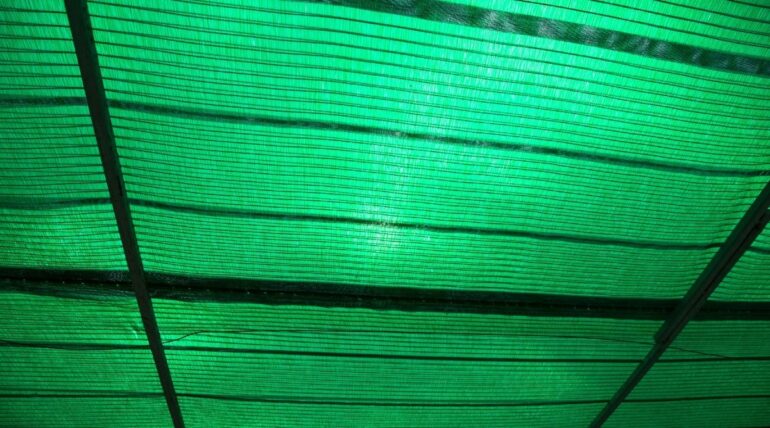In the journey to nurture a flourishing veggie patch, those with green thumbs often explore creative ways to boost the well-being of their plants. A popular helper in this quest is the shade cloth – a type of netting that shields plants from the harsh sun. While our green friends do need sunlight to grow, too much can harm them, especially in the height of summer, causing problems like burns, drying out, and stunted growth.
Using a shade cloth wisely can help make a garden spot that’s just right for plants, but the trick is picking the perfect color. This discussion dives into how to choose the best shade cloth color for your veggie garden, looking at different things that matter for keeping plants happy and fruitful.
Getting to Know Shade Cloth and Why It’s Used
Shade cloth is more than a simple sunblock; it’s a way to manage the tiny climate within your garden. By softening and cutting down direct sunlight, shade cloth keeps the light, warmth, and moisture levels just right, which are all important for plants to make their food and stay healthy.
Different colors of shade cloth can change how much light gets through and also the warmth under the cloth. Learn more about what color shade cloth is best for vegetable garden at qibangnetting.com.
The Rainbow of Options
Shade cloths come in many colors, each changing how light and warmth work underneath. Common colors are black, white, green, red, and blue. The color you pick can really make a difference in how your veggies grow, flower, and produce fruit.
Black Shade Cloth

Black shade cloth is a classic choice because it’s good at blocking UV rays and provides even shade. It soaks up sunlight and spreads it out, lessening its power without messing with the light too much. This makes black a good all-rounder for lots of veggies, especially those that like less light. But, it’s worth noting that black can make things hotter underneath, which might not be great for plants that don’t like the heat in the middle of summer.
White Shade Cloth
White shade cloth bounces sunlight back, which is awesome for keeping things cool underneath. It’s really good for places with strong sun and high heat. The softer light helps stop burns and stress from heat in delicate veggie plants. White is perfect for leafy veggies and herbs that prefer a chill, less intense light.
Green Shade Cloth
Green shade cloth tries to copy the light under a tree, blocking out bits of light that plants don’t use much. This color can make a peaceful, natural space that helps lots of veggies grow well. But, green is more of a niche choice and might not be as widely useful as black or white.
Red and Blue Shade Cloth
Newer options include red and blue shade cloths, each with special perks related to light. Blue shade cloth is great for growing big, leafy plants by copying the cool, shady light of early spring. Red shade cloth, on the other hand, can boost blooming and fruiting by imitating the warm light of late summer. These colors can be used with a plan to help certain parts of plant growth.
Things to Think About When Picking a Shade Cloth Color

What You’re Growing and Its Stage
Different veggies and their growth stages need different light and warmth. Knowing these needs helps pick the right shade cloth color. For example, leafy greens usually like it cooler, so white might be best, while fruiting plants like tomatoes could do well with the energizing touch of red during blooming and fruiting times.
Your Local Weather
Your area’s weather is key in deciding the best shade cloth color. In hot, sunny places, a reflective white might be needed to keep things from getting too hot and dry. In cooler, less sunny spots, black or green might give enough protection without making it too dark.
Where Your Garden Sits and Sunlight
How your garden sits and how much sun it gets should help guide your color choice. Spots that get a lot of direct sun might need a cloth that reflects more light and cools, like white, while areas with some shade could do well with a color that lets enough light through, like black or green.
What You Want to Achieve

Think about your goals with using a shade cloth in your veggie garden. If you want to guard against the strong noon sun but still want strong growth, black or green might be enough. But, if you’re aiming to boost blooming and fruiting, trying red or blue during certain growth times might help.
How You Set It Up
How well your chosen shade cloth color works can depend on how you set it up. It’s important to keep enough space between the cloth and the plants to prevent overheating and let air move. The way the cloth is angled and its height can also change how much light and shade your plants get. Being able to adjust things can let you respond to different sunlight conditions throughout the day and year.
Keep an Eye Out and Make Tweaks
Once your shade cloth is up, watch how your garden does. Look out for signs that your plants aren’t happy, like wilting, leaves turning yellow, or growth that seems to slow down. If you spot these signs, think about changing the shade cloth’s color, how dense it is, or where it’s placed. Gardening is all about learning and making small changes, so tweaking how you use your shade cloth might be needed to get the best results.
Wrapping Up

Picking the right shade of cloth color for a vegetable garden means thinking carefully about what plants need, your local weather, and what you want to achieve. There isn’t a single perfect answer; it varies based on lots of things, like what veggies you’re growing, where they are in their life cycle and the conditions in your garden.
By really looking at these points and being ready to try different things and make adjustments, gardeners can use shade cloth as a great tool to help their vegetable gardens thrive. With the right approach, shade cloth can become a key ally in creating a garden that’s full of life and bounty.
